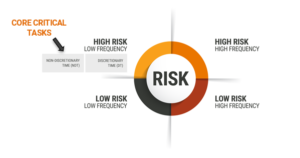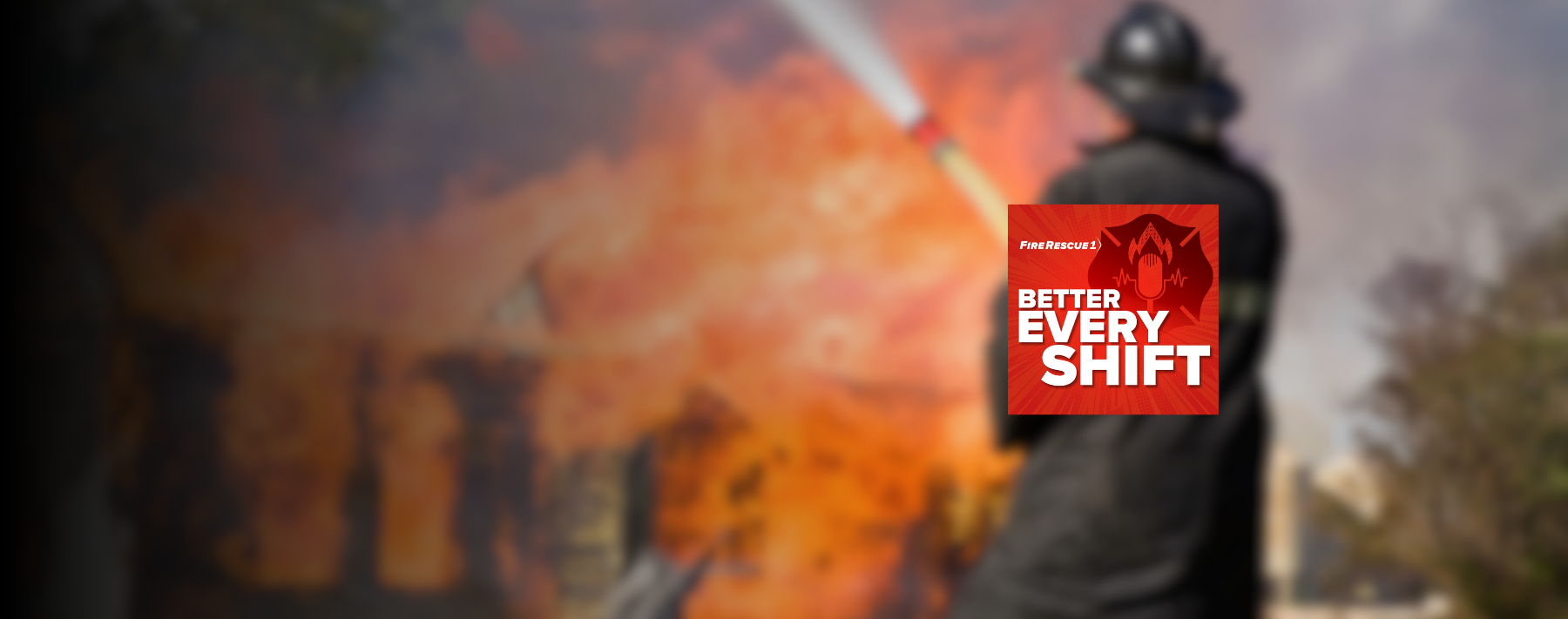Editor’s note: This article is part of a series. Click here for the previous article.
Gordon Graham here! In the last two articles in this series on managing risk in public safety operations, I have focused on the importance of ongoing training regarding the “core critical tasks” you face in your operations.
A quick recapitulation of the above graphic: The events you perform in the two right-side boxes are usually done correctly because you do them all the time. As long as you do not allow complacency, fatigue, hubris, distractions or risk homeostasis to creep in, you will perform well in these events.
The two bottom boxes represent low-risk events. While we always want things done correctly, I don’t worry too much about these events because even if they are not done perfectly, the consequences are not severe.
My worries are centered on the top left box—the high-risk, low-frequency events. Throughout these articles I have stressed the importance of knowing the tasks in your job that fall into this box—and the need for constant and ongoing training concerning these tasks so that you will get them done right.
The Pre-Flight Safety Demonstration
One of the examples I often talk about in my live programs is the value of the pre-flight safety demonstration the airlines provide to all passengers. After my last article I received quite a few emails from friends (and some people I did not know) from Canada informing me that “Canada does it better.”
They went on to explain that on commercial flights in Canada longer than four hours (Vancouver to Toronto, for example), their law requires a safety briefing prior to takeoff and a second briefing prior to landing. My response to those queries was “Good for Canada”—and I mean that sincerely.
I like their thinking because it reinforces to the passengers the higher level of risk involved in takeoff and landing. Providing that extra safety briefing immediately prior to landing reinforces what to do in the event of an in-flight emergency.
A couple of the emails went on to tell me that in Canada there are different aviation rules for wearing headsets that provide music or sound-deadening. Headsets must be removed during takeoff and landing. And guess what? I like that thinking, too. People need to be able to hear what is going on during takeoff and landing of airplanes.
While this is not the law here in the States, there is nothing to prevent you from doing this for yourself. Pay attention to the flight attendant (and please do not use the word “stewardess”—some of the young kids reading this probably have to look up the meaning of that word, which is generally a good indicator not to use it). When you hear the engines throttling down and feel the plane descending, there is nothing to prevent you from again referring to the safety briefing card in the seatback in front of you to refresh your memory.
The Full-Scale Emergency Evacuation Demonstration
As I type this my brain is going way, way back in time to when I was a young motorcycle cop going to school and spending most of my money on tuition and books. At the time I lived in Lakewood, Calif., the genesis of the “Lakewood Plan,” in which cities contract with the county for services rather than having their own library system, law enforcement and fire agencies and other government services—a model now used by many communities around America.
My route of travel to and from work involved passing the (then) McDonnell Douglas aircraft plant on Lakewood Boulevard near the 405. While my goal was getting home, there were some occasions when I had to take enforcement action for serious violations of traffic laws, like the time a car went the wrong way down Lakewood Boulevard to avoid the bottleneck at end of shift, and the time a couple of pickup trucks just drove over the raised divider to avoid traffic. Oddly enough, when I got these vehicles stopped, I realized there was some alcohol impairment involving the drivers.
The $100 they paid for three hours of my time was attractive, so when I was on a day off, I would go the factory and participate in these evacuation drills known as the FULL-SCALE EMERGENCY EVACUATION DEMONSTRATION.
After a couple of arrests involving a BA level in the .20 and higher range, I learned that some McDonnell Douglas employees enjoyed lunch at a restaurant across the street named Thirsty Isle. If the name is not enough of a hint, on their marquee they had a follow up statement: “Home of the 32-ounce Schooner.” If you are into the whole math thing, 32 ounces of beer is quite a bit to have for lunch. The age-old expression “I just had two beers” takes on a different meaning indeed.
My handy-dandy Mac is now telling me that I am dangerously close to exceeding my word limit, but I will utilize my option of extending the article because I feel this is crucial information to disseminate.
After several of these arrests for driving under the influence, I got to talking to the security personnel at the factory regarding their employees drinking at lunch and then building airplanes (even then I recognized that could be a problem) and I became friends with some of the security personnel. This friendship led to an invitation to participate in the federally mandated evacuation drills aircraft manufacturers had to do to ensure the entire plane could be evacuated in a very small time frame (if my memory is right it was 90 seconds) in the event of an emergency.
The $100 they paid for three hours of my time was attractive, so when I was on a day off, I would go the factory and participate in these evacuation drills known as the FULL-SCALE EMERGENCY EVACUATION DEMONSTRATION.
The staff at the factory would load up the plane (DC-10s were still being built then) and when everyone was seated (the maximum capacity of this wide-body plane was 380 passengers) they would sound the alarm and the flight attendants (not stewardesses) would open the doors and the slides would deploy and all 380 of us would go down the slides and then walk away from the aircraft.
I did this drill several times and it was fun. I met new friends—and don’t forget there was $100 involved and that was a very big deal to me back then. I stopped doing this after a tragic event in which one of the “evacuees” did not get off the slide quick enough and was hit from behind by a much larger passenger and suffered a broken neck. All of a sudden the $100 did not seem that important and I found other ways to supplement my income to pay for my education.
So the next time you are seated in the emergency exit row on Southwest (it has extra leg room to provide the path for people to get off the plane in an emergency) and the flight attendant (don’t use the word stewardess) does the pre-flight safety briefing and then requires the “verbal yes” acknowledgment that you are willing and able to help evacuate the plane, please recognize the real risks involved in this “core critical task” and make sure you have a plan in your head of what to do in the extremely rare event of an emergency.
In my next article, I will switch my focus to the other side of the top left box—what to do when you have time to think. And that will lead to how you can provide your personnel with a decision-making process (a checklist) that works.





